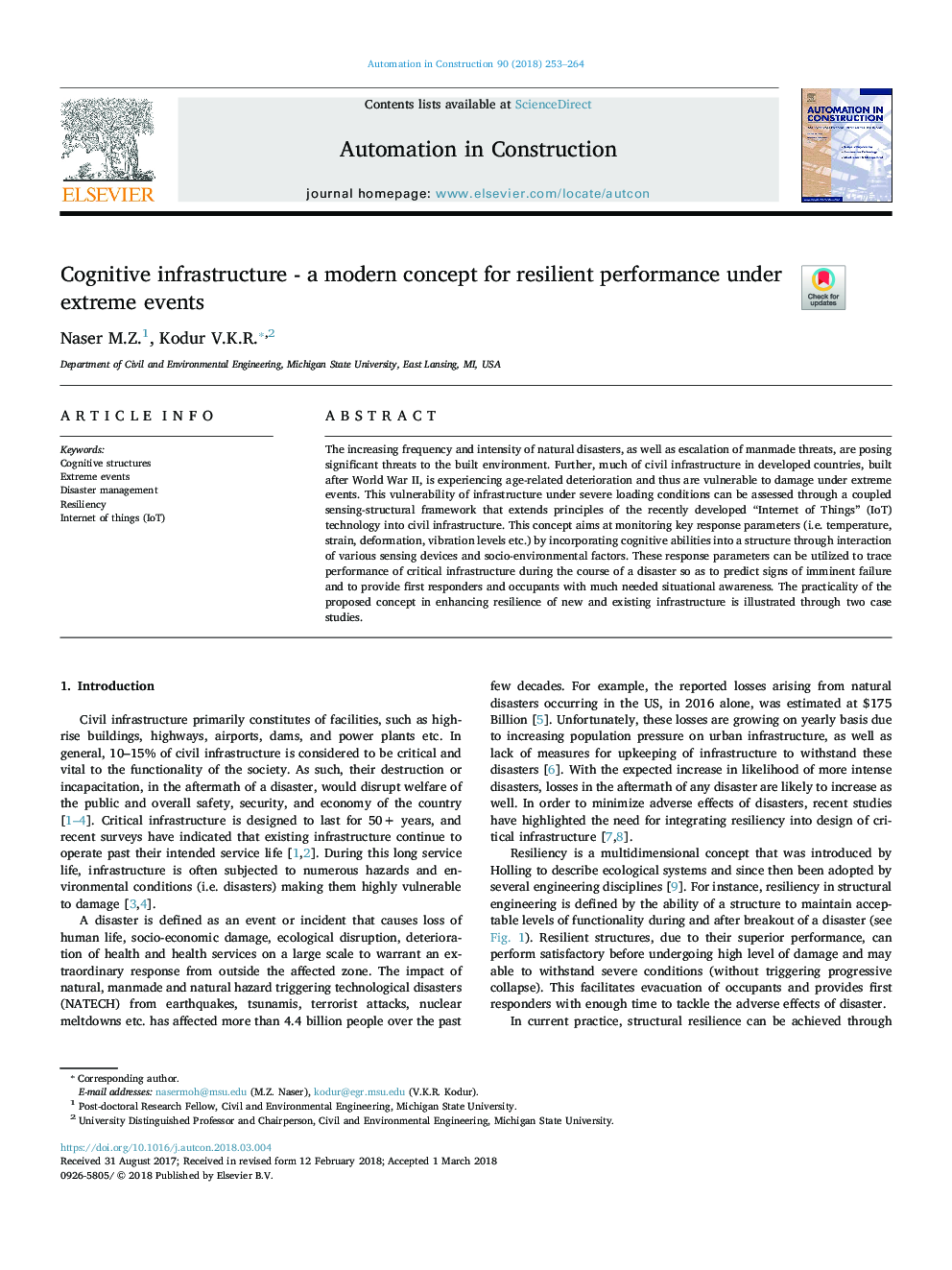| Article ID | Journal | Published Year | Pages | File Type |
|---|---|---|---|---|
| 6695696 | Automation in Construction | 2018 | 12 Pages |
Abstract
The increasing frequency and intensity of natural disasters, as well as escalation of manmade threats, are posing significant threats to the built environment. Further, much of civil infrastructure in developed countries, built after World War II, is experiencing age-related deterioration and thus are vulnerable to damage under extreme events. This vulnerability of infrastructure under severe loading conditions can be assessed through a coupled sensing-structural framework that extends principles of the recently developed “Internet of Things” (IoT) technology into civil infrastructure. This concept aims at monitoring key response parameters (i.e. temperature, strain, deformation, vibration levels etc.) by incorporating cognitive abilities into a structure through interaction of various sensing devices and socio-environmental factors. These response parameters can be utilized to trace performance of critical infrastructure during the course of a disaster so as to predict signs of imminent failure and to provide first responders and occupants with much needed situational awareness. The practicality of the proposed concept in enhancing resilience of new and existing infrastructure is illustrated through two case studies.
Related Topics
Physical Sciences and Engineering
Engineering
Civil and Structural Engineering
Authors
Naser M.Z., Kodur V.K.R.,
